How Damien Hirst staged his comeback with sunken treasures in Venice
Damien Hirst’s ‘Treasures From the Wreck of the Unbelievable’, which is on view in Venice, includes ancient works supposedly rescued from a sunken ship in the Indian Ocean
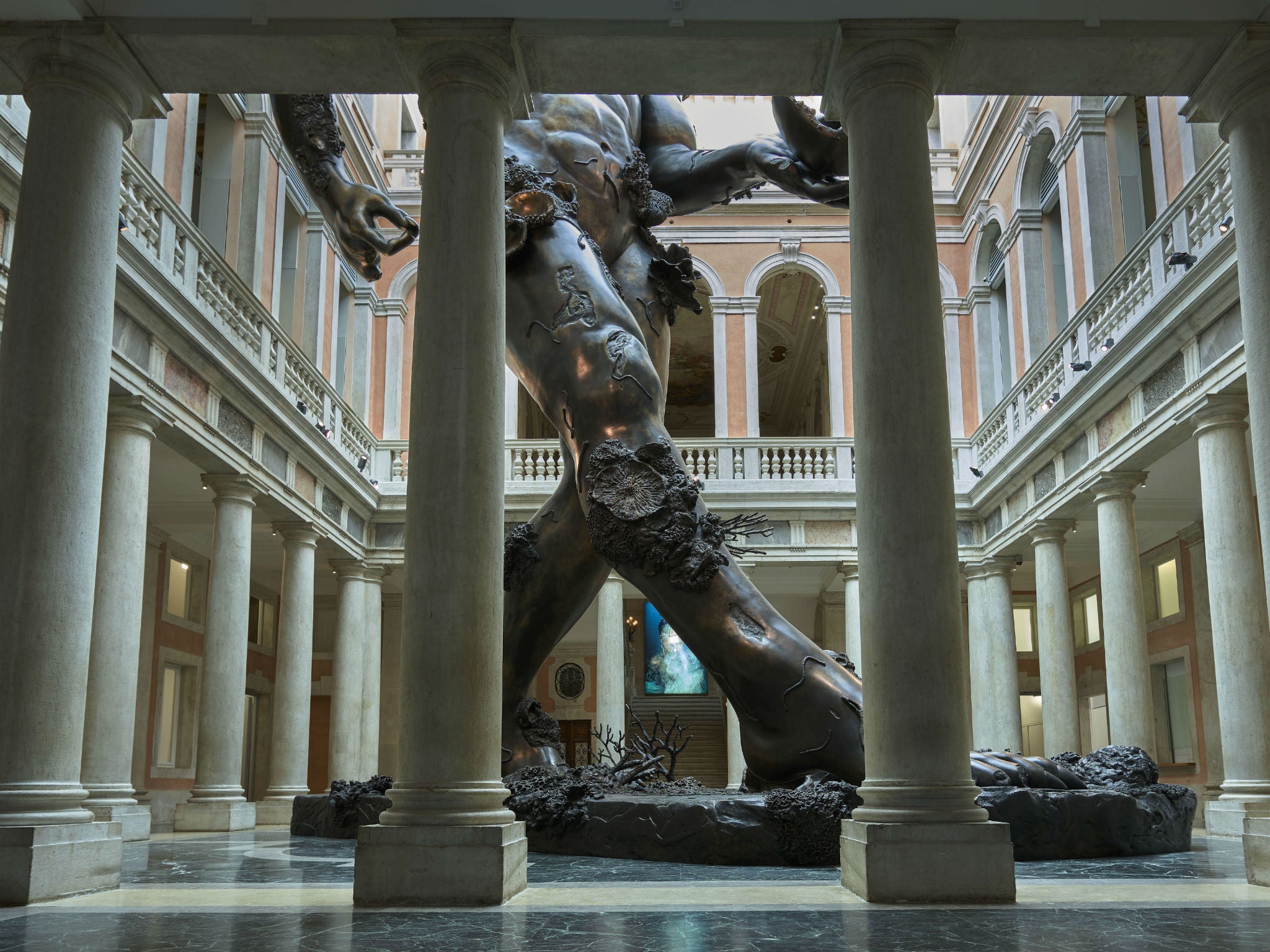
Your support helps us to tell the story
From reproductive rights to climate change to Big Tech, The Independent is on the ground when the story is developing. Whether it's investigating the financials of Elon Musk's pro-Trump PAC or producing our latest documentary, 'The A Word', which shines a light on the American women fighting for reproductive rights, we know how important it is to parse out the facts from the messaging.
At such a critical moment in US history, we need reporters on the ground. Your donation allows us to keep sending journalists to speak to both sides of the story.
The Independent is trusted by Americans across the entire political spectrum. And unlike many other quality news outlets, we choose not to lock Americans out of our reporting and analysis with paywalls. We believe quality journalism should be available to everyone, paid for by those who can afford it.
Your support makes all the difference.Never has a show so polarised the critics. Has Damien Hirst sunk into the murky watery depths in Venice or has he triumphed? From two stars in The Telegraph to five stars in The Guardian and the London Evening Standard, which critic is closer to the truth?
This is a sprawling overblown thematic exhibition over two venues with a strong clue in the title: “unbelievable”. The conceit is that a Cif Amotan II, a freed slave from Antioch in Turkey who lived between the mid-first and early second centuries, had accumulated many goodies, both real and fakes and loaded Apisto, the largest ship of its time to bring it to a designated temple only to have it founder. The myth of this “hubris, avarice and greed” was perpetuated until the wreck was discovered in 2008, more than 2,000 years, later in the Indian Ocean. Its fabled contents of 170 objects covered with the “natural” accretions of coral, barnacles and sea worms. There are videos of divers underwater to give a sense of veracity (or not) to the mythology.
The choice of the watery Venice for this project is perfect. As a crossroad for trade long before its current role as a touristic theme park, Venice is slowly sinking into the sea partly due to the huge boats that are allowed to sail through the city. From the deck of the Hotel Monaco where we are being expensively housed, I can already spy Mermaid, one of Hirst’s large bronzes, standing high under the distinctive golden ball of Punta della Dogana.
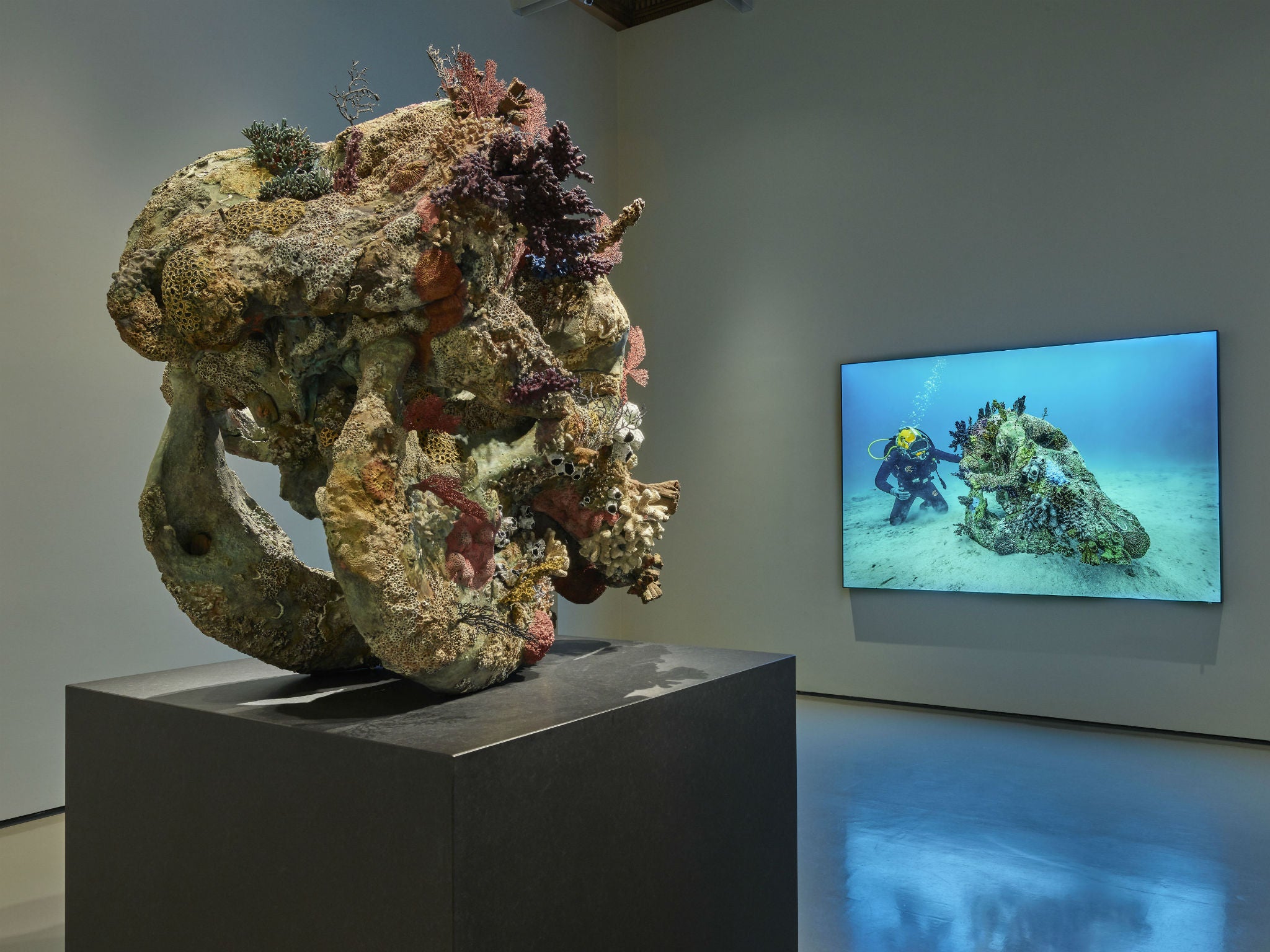
When we first enter the museum as a group, we were told by Elena Geuna, the curator, “prepare to be marbled” (sic) – which, given the large amount of marble on display, quarried from a single quarry in Carrara, is a good, if unintentional, pun. We are given yellow press bags, the colour of life jackets, as if to prepare us for some dangerous boat journey instead of a tour of wonder: cabinets displaying marvellous trinkets made of exotic materials – jade, malachite, agate, gold and silver.
By the time I have headed over to the Palazzo Grassi I have got used to the idea of Hirst inviting viewers to join him in his own fervid belief that when he closes his eyes he can see Cif Anotan II. Hirst has truly morphed into the collector, as attested by an encrusted bust The Collector with undeniably his own face.
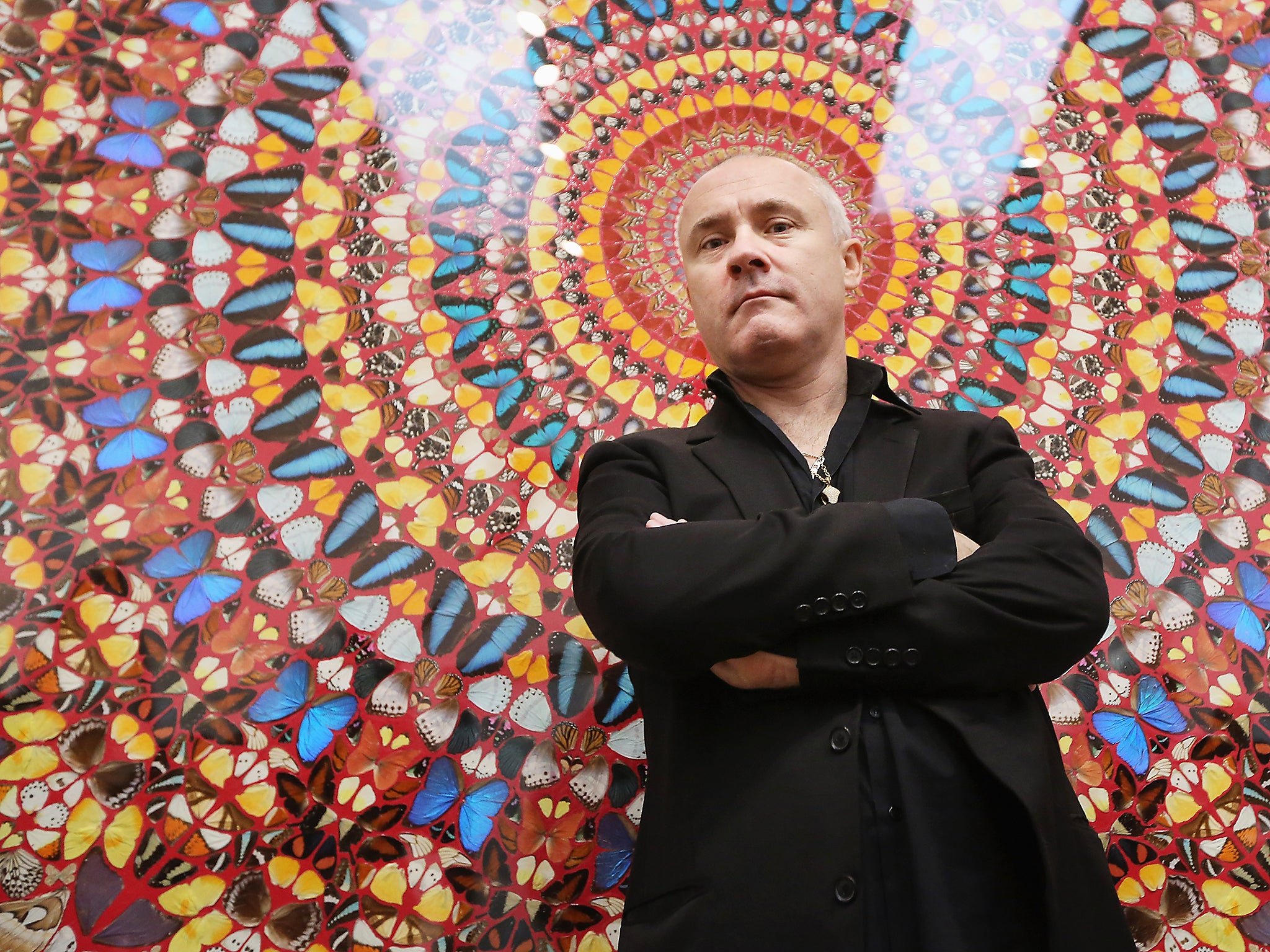
This is the first time that art collector François Pinault has designated both of his sites to one artist. In the past the Palazzo Grassi has been the site of glorious bigging-ups by artists including Jeff Koons’s shiny balloon dogs and Joana Vasconcelos’s opulent spillages. Reopened in 2009 after a lengthy restoration, the Punta della Dogana, the former customs house having laid empty for more than 30 years before a meticulous restoration by Japanese architect Tadao Ando. Saved from being turned into a hotel of flats, one has to be impressed with the meticulous sensitivity and attention to detail.
Hirst has coopted both his own childhood and those of his children and his friends with myriad references including William Blake, Barbie Dolls, Mickey Mouse, Goofy, The Jungle Book, Game of Thrones, video games, transformers and swords as well as cultures as diverse as Egyptian, Roman and Mayan amongst others.
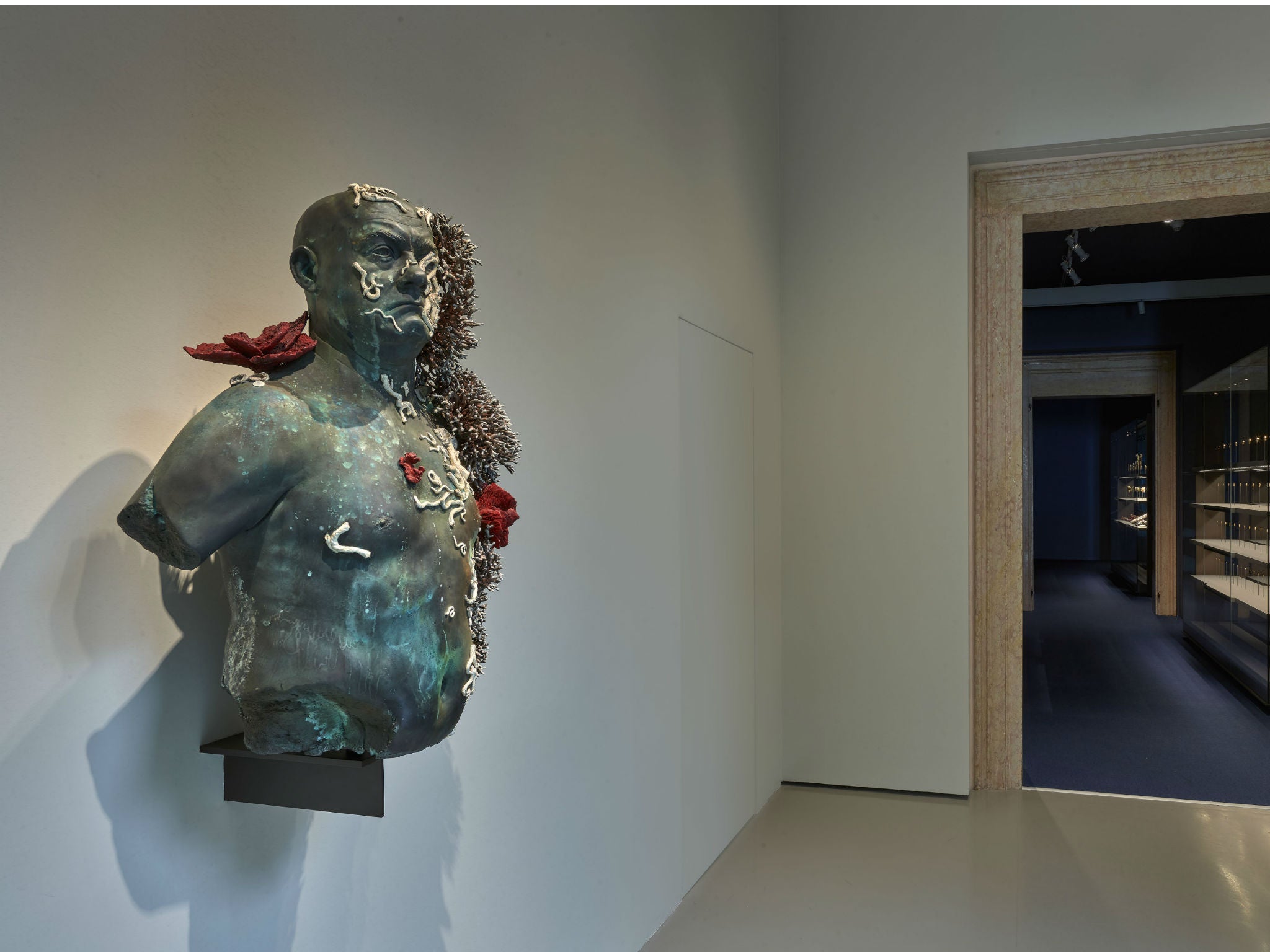
It quickly becomes a bit of a Where’s Wally experience as we peer at the works to see the references, tattoos, stamps and identify trademarks like Mattel and Sea World. Is that Kate Moss made of bronze and gold leaf under that glorious head-dress made of bronze and gold leaf? And can those eyes in Tadukheba, a marble bust head of pure white Carrera, really be genuine emeralds? Well, of course they are. Why has that Egyptian torso got a diamond nipple ring? Well, it looks like Pharrell Williams, after all. Why is Goofy so adorned with sea creatures? There is a theatricality that dazzles with this mash-up and array of scale. Once you see the realistic-looking large nautilaus shells, and accretions of the mythical woman pretending to be from the sea are really made of bronze, the absolute technical virtuosity of the craft looms perhaps too large.
In the large atrium of the Palazzo Grassi at the heart of the exhibition is Demon with Bowl, based on William Blake’s Ghost of a Flea. Imposing and headless, made of resin its patina resembling bronze and standing more than 16m tall, it was assembled in slices. When I speak to Mauro Baroncelli, the director of operations at the Palazzo Grassi, over a dinner of suitably decadent excess, he tells me The Golden Ball fits into the atrium space with only a clearance of 15cm at the top and 50cm of the right arm. Undoubtedly a bronze will eventually be cast and will adorn some sculpture park, but in the meantime we the viewer can observe this powerful bit of imagination with its swelling tight buns from multiple vantage points.
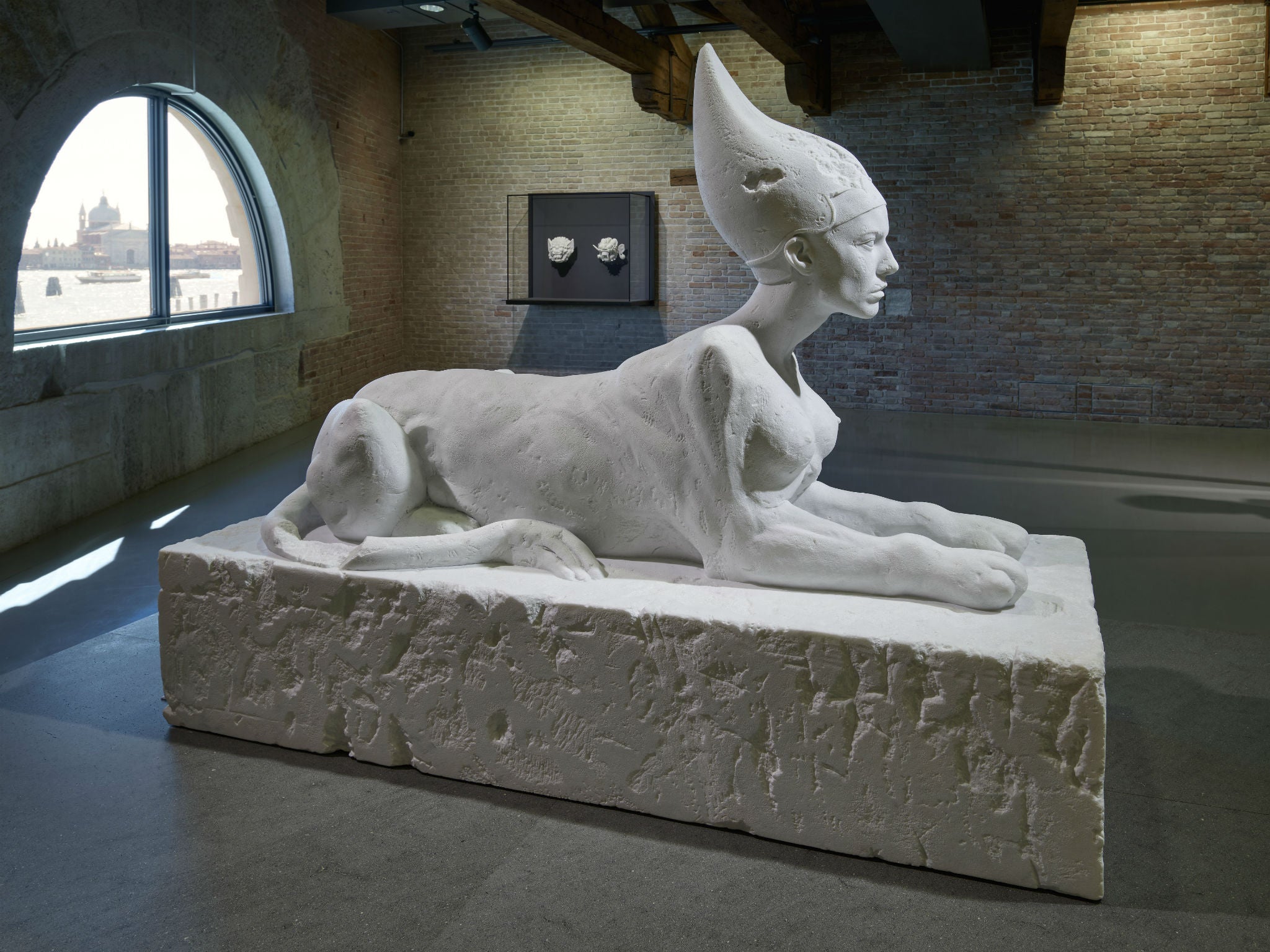
According to the spokespeople from Hirst’s studio, the project was made completely with the artist’s own money. “Many millions” was the closest figure the tight-lipped inner sanctum would divulge; “more than £50m” was the figure Hirst admitted when he was pressed by the BBC.
Billionaire Hirst collector François Pinault, owner of, amongst other things, Christies auction house, has paid for the elaborate installation and the press jamboree.
This is not the first time that Hirst has incorporated a jaw-dropping use of precious materials. When For the Love of God (2007) composed of a platinum human skull covered in 8,601 diamonds, was offered for sale at £50m, The New York Times reported that, if sold, “Mr Hirst’s skull will be the most expensive new work of art ever made”.
I saw For the Love of God in both the gallery and at Tate and the power of the real materials as well as the carefully orchestrated display and lighting made the experience overwhelming. If the influences behind the skull were obvious – at the time Mexico was a big influence – Hirst was the ultimate appropriator.
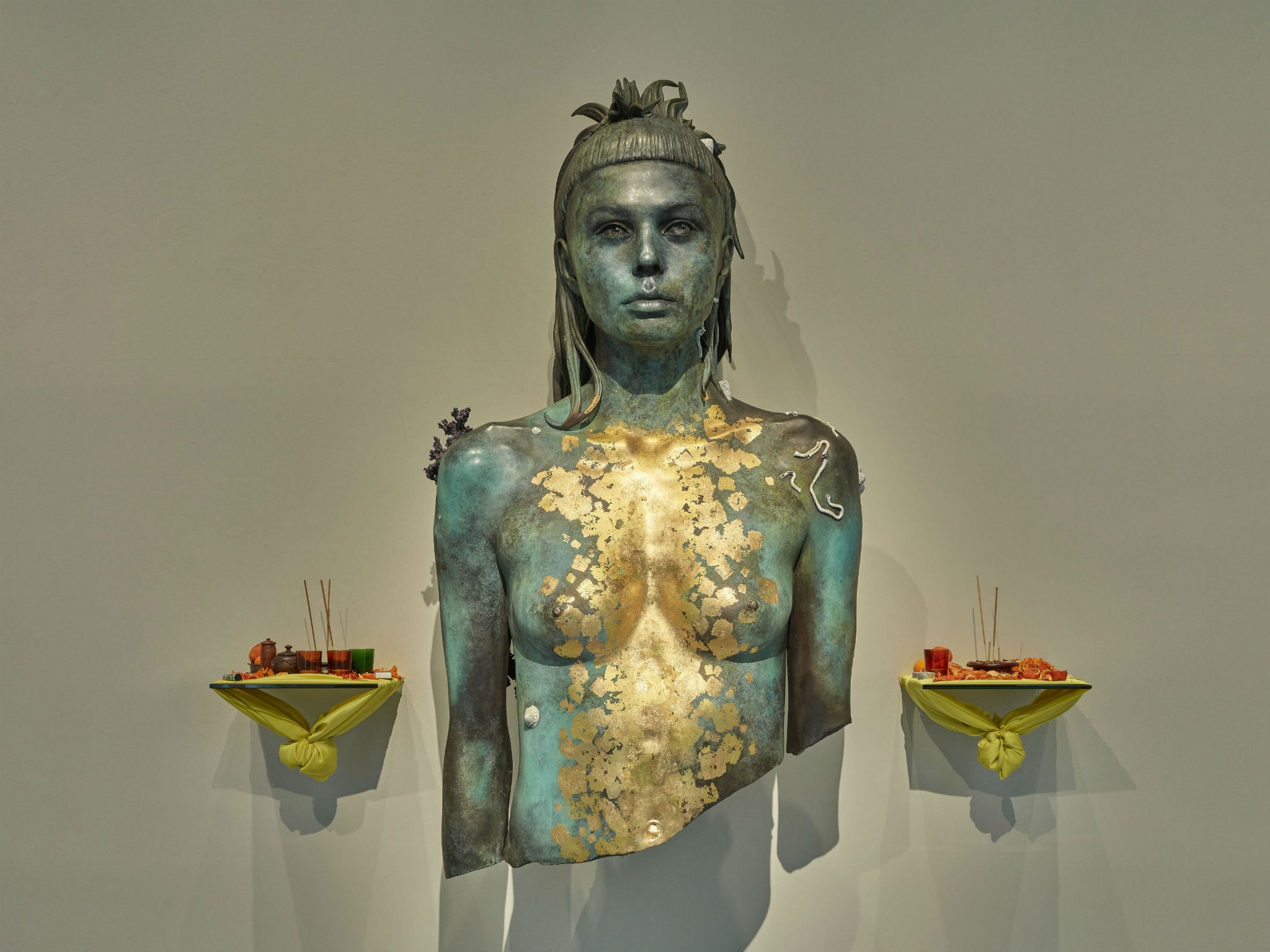
Walking around the Palazzo Grasso and internally debating the merits of the show, I pause and peered at the golden rococo window catches, and gleaming in the sun. Were they Hirst or original, I ask. “All original,” I am told by Baroncelli, my newly found friend. Hirst has made anything possible in my eyes.
So how many stars would I give? While there is a huge span of quality and some of the objects, like the bronze Andromeda and the Sea Monster, are downright clunky, I still would give it five stars for the fertile imagination and its strident demands for suspension of our belief. Go and prepare to be amazed and bemused and amuse the children or non-art world friends of your party by counting the number of influences you can identify and the clues left like breadcrumbs by the artist left for the observant viewer, such as the supposedly antique drawings signed “In this Dream” (an anagram of the artist’s name). Play the game of which would you give shelf space to? I personally like the miniature transformer in gold on a particularly lush bit of crystal.
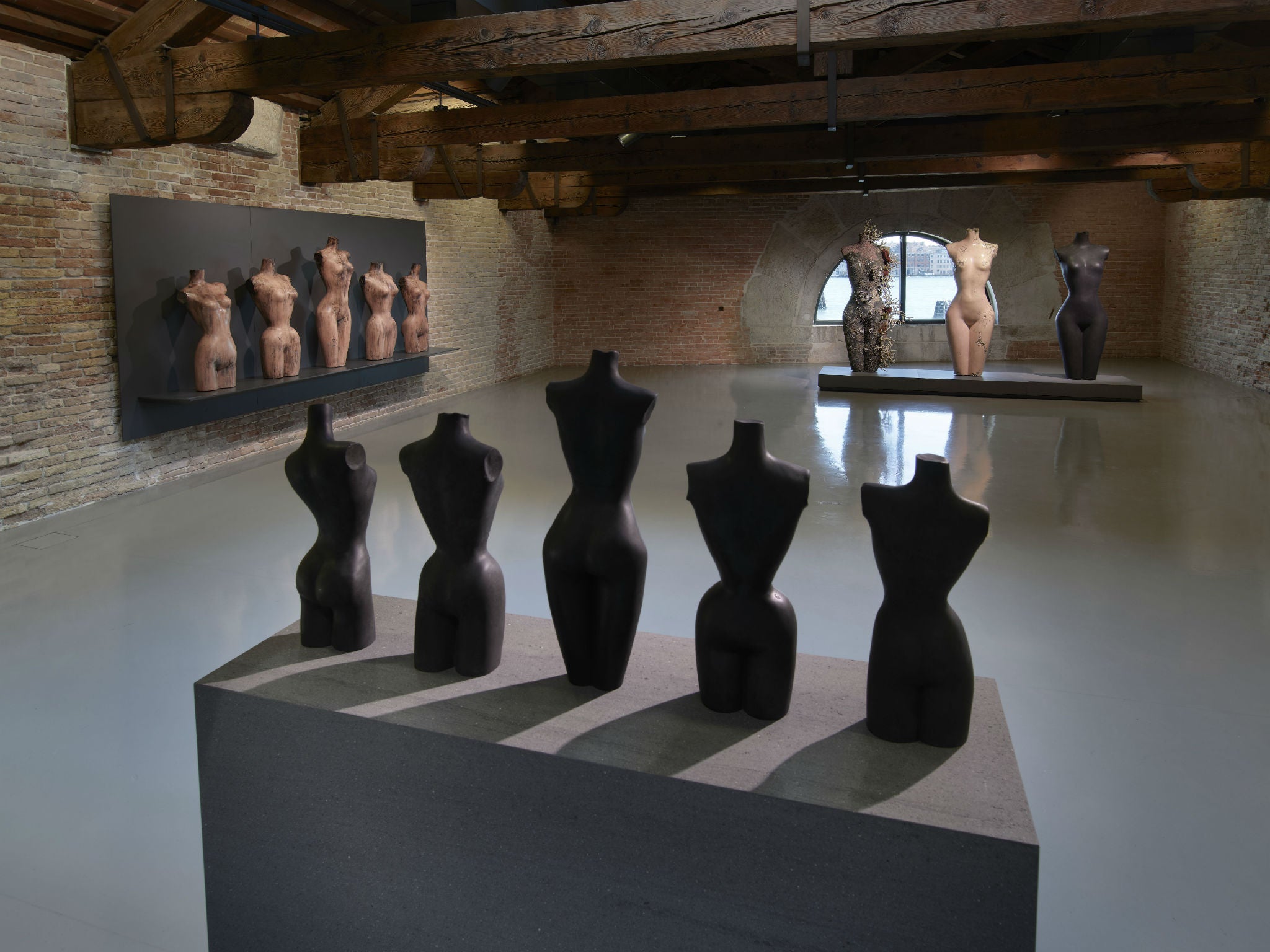
Try and have as much fun as Hirst and his team of merry collaborators have obviously had. I leave you with this lovely quote from The Tempest by Shakespeare to mull over:
“Full fathom five thy father lies:
Of his bones are coral made;
Those are pearls that were his eyes:
Nothing of him doth fade,
But doth suffer a sea-change
Into something rich and strange.”
‘Damien Hirst: Treasures From the Wreck of the Unbelievable’, Palazzo Grassi and Punta della Dogana until 3 December 2017, Venice, Italy
Join our commenting forum
Join thought-provoking conversations, follow other Independent readers and see their replies
Comments